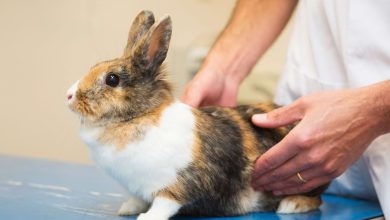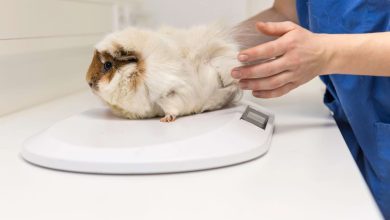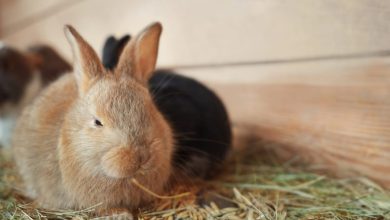Make an Enriching Home for Your Pet
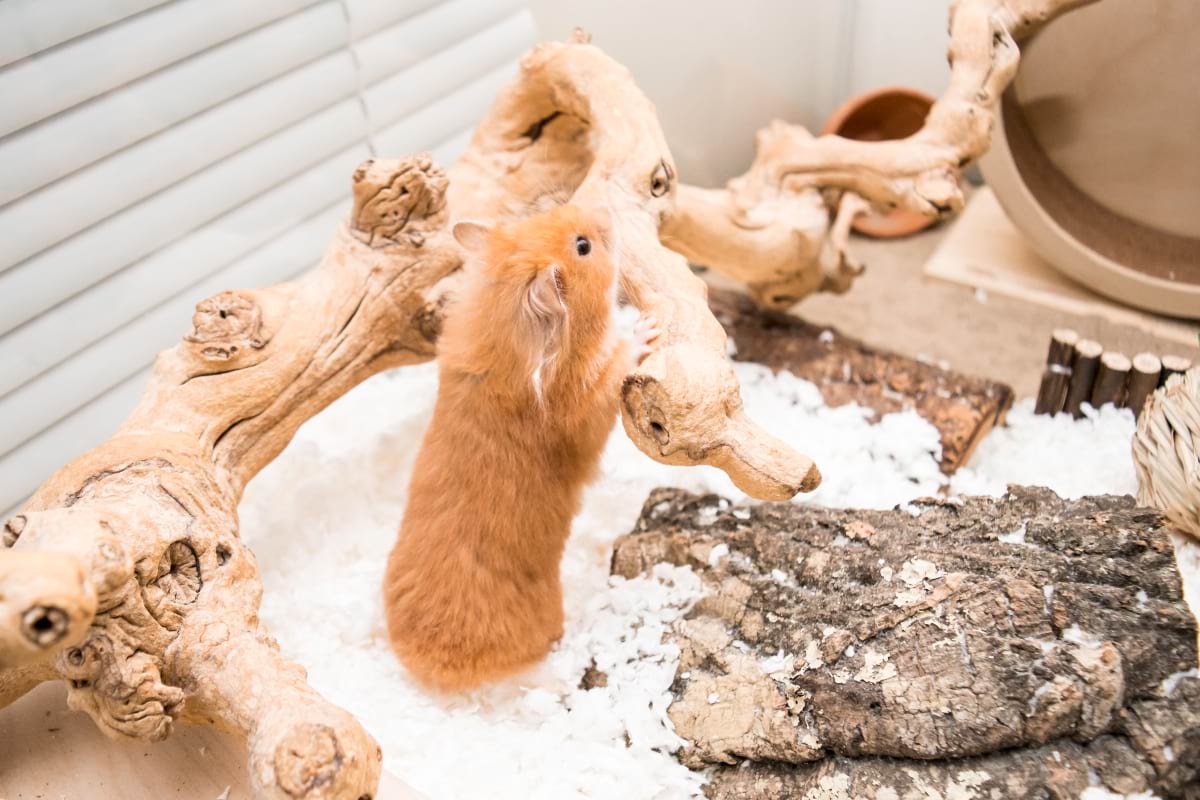
Whether you’re new to the world of hamsters or just looking for some inspiration to upgrade your hamster’s living space, we bring you a complete guide on creating a cozy and enriching home for your hamster.
By creating a thoughtfully set-up hamster cage, you’re providing a dynamic environment that encourages your pet to stay active and engaged. Through exploration, digging, and foraging, your hamster can use up their energy in a healthy and natural way. On the other hand, a cage that lacks stimulation can cause stress and boredom, leading to unwanted behaviors such as cage biting.
While it may be tempting to keep things simple with a tiny cage and a minimalist cage setup, this type of living space would make your pet miserable. Hamsters are naturally energetic creatures that roam and forage for food all night in the wild. In fact, they can run up to 6 miles each day! Confining them to a tiny cage with limited space and enrichment fails to satisfy their instinctual needs and desires.
Here’s how to do a proper hamster cage setup, starting with getting a suitable cage.
A Suitable Cage
First things first, to be able to set up a hamster cage properly, you need to have a decent-sized cage. Unfortunately, those small hamster cages that you can purchase in a pet shop won’t work as they are smaller than the recommended ethical minimum. Those cages also don’t have enough room to fit all the accessories that a well-set-up hamster cage needs, such as deep bedding, a large wheel, a sand bath and other essentials.
Ideally, a hamster cage should be no less than 775 square inches or 5000 cm². Your options are buying a ready-made cage of that size or bigger, using a specious aquarium, or making a DIY cage out of a plastic bin or IKEA closet such as Detolf.
We have a detailed guide on the best hamster cages here so you can see your options if your current cage is not big enough. If you’re not sure your cage meets the minimum size requirements, check using this hamster cage calculator.
Safe & Deep Bedding
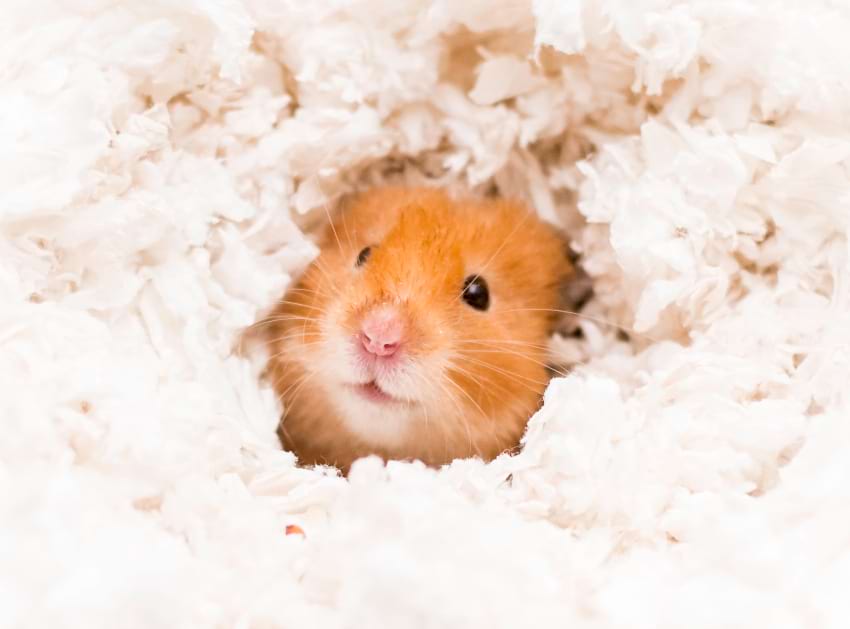
You have a big enough cage, and you’re ready to start setting it up and making it comfortable for your furry potato. The first thing you’ll need is bedding (substrate).
Hamsters are burrowing animals, so they need a deep layer of bedding to dig and create underground tunnels to chill in. They sleep in their burrow, away from all the dangers they think await them on the surface. Being able to burrow is essential for their well-being.
Unfortunately, it’s common for hamsters to be housed in cages with only an inch or two of bedding with no option to burrow. In those cases, owners often see their hamsters gnawing on the cage bars and wonder what the issue is. Hamsters get stressed when their needs are not met, and they can’t express their natural behaviors, so they start biting the bars. Research has shown that hamsters living in deeper bedding show significantly fewer signs of stress, such as cage biting.
How Much Bedding to Use?
So let’s get to the specifics – how much bedding do hamsters need? The bedding depth depends on the species of hamster you have. There’s a big difference in size between dwarf species and a Syrian hamster, while a Chinese hamster is somewhere in the middle.
- For dwarf species and Chinese hamsters, the minimum amount of bedding they need is 6 inches, although 10 inches is recommended – especially for Chinese hamsters, which are a bit larger.
- Syrian hamsters need at least 10 inches of bedding due to their size, but 12 inches is preferable.
Here’s another way to look at it. Imagine three hamsters placed one over the other. Could you bury them in the bedding? If so, it should be deep enough. If not, add more bedding until the top imaginary hamster is covered.
With our hamster bedding calculator, you can easily calculate how much bedding you need to buy for your cage, depending on the size of your cage and the desired bedding depth.
What to Use as Bedding?
Hamster owners most commonly use these two options as the main burrowing substrate:
- Paper bedding
- Aspen shavings (some products are not good at holding burrows and need to be reinforced with paper bedding and hay)
Hemp bedding is also safe, although it’s not very effective at holding burrows. You can use it to provide another texture to walk on, but best to stick with aspen or paper as the primary bedding.
Other safe textures you can add in a small part of the cage are coconut fiber, granule paper bedding, shredded cardboard, coco husk, and sphagnum moss.
The substrate you choose should be:
- Non-scented
- Able to hold burrows
- Non-toxic
Mixing different substrate types to add variety and different textures to interact with is always a good idea.
Nesting Material
In addition to the main bedding (substrate), it’s important to provide nesting material that your hamster can use to build their nest.
Sprinkle some soft hay, such as botanical or orchard, over their main bedding so your hamster can use it to build their nest.
Another good option for nesting material is toilet paper. Rip off a few toilet paper sheets and put them in the cage. Although toilet paper is not very absorbent, it’s fine to use for nesting as hamsters don’t tend to pee or poop in their nest.
Hidey House
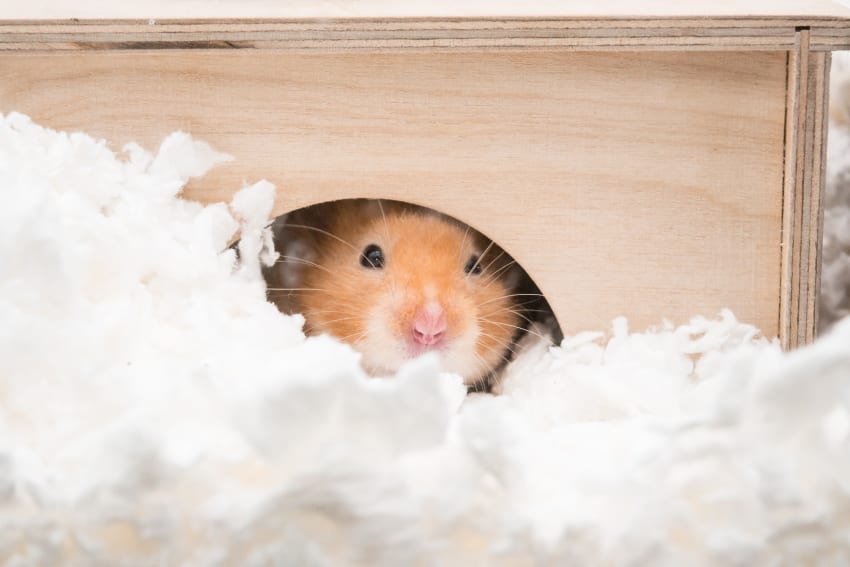
Next on the setup list is a hidey house that your hamster can use to hide and feel protected while up on the ground. Most people opt for a wooden house instead of plastic as hamsters can safely chew wood.
You can get one without the floors, so you can easily scoop it up and clean the leftover food or poop under it.
I also recommend getting a multi-chamber house so your hamster can use different rooms for nesting and stashing food, just like they do in the wild.
A Wheel
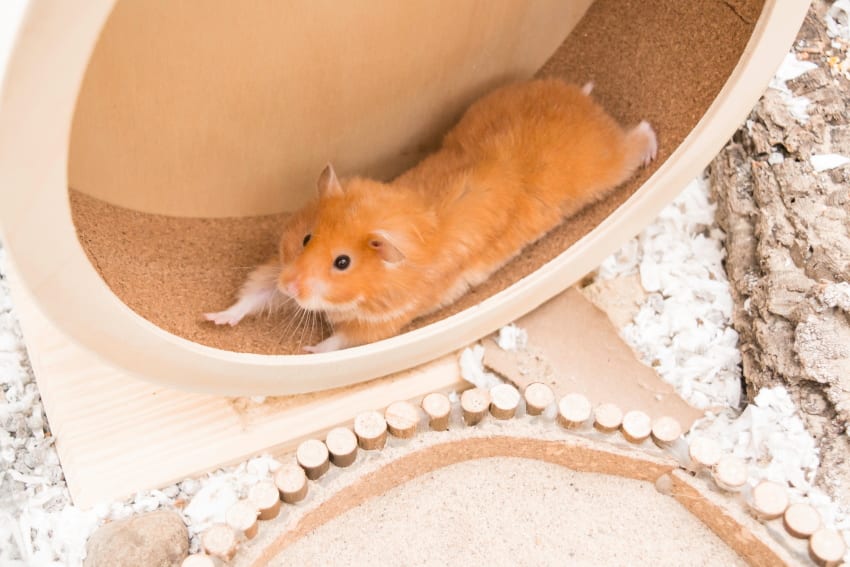
Hamsters spend a lot of their time running on the wheel, so it’s important that the wheel they use is safe and can’t cause any harm.
When choosing a wheel for your hamster, keep this in mind:
- A wheel needs to be made of solid material – No metal bars or mesh that can trap limbs or cause injury to your hamster’s feet.
- A wheel needs to be big enough – A wheel that is too small can cause back injuries in hamsters because they’re always running with their backs curved. Here are the minimum wheel sizes for each hamster species:
- 8″ in diameter (20 cm) for dwarf species
- 10″ in diameter (25 cm) for Chinese hamsters
- 11’’ in diameter (28 cm) for Syrian hamsters
Also, don’t use a flying saucer as their primary wheel in the cage, as that one is not a good substitute for a regular upright wheel.
Sand Bath
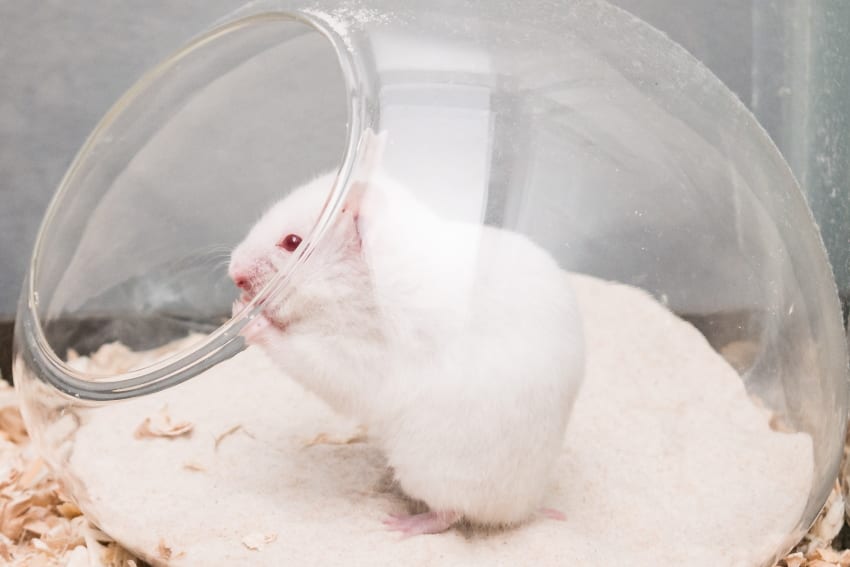
Although hamsters are extremely clean animals and don’t shy away from grooming themselves, a sand bath helps keep their skin and fur nice and shiny.
Hamsters should never be bathed in water as it’s unnecessary and too stressful. A sand bath works great for removing the dirt and oil that has accumulated in your pet’s coat.
It’s easy to add a sand bath to your hamster’s cage. All you need is a shallow container big enough for the hamster to roll around in filled with hamster-safe sand.
What’s hamster-safe sand? Here are the options:
- Reptile sand – natural color, with no added minerals or calcium (such as Reptisand)
- Chinchilla bathing sand
- Children’s play sand – heat treated. If it’s not heat treated, it should be sanitized by baking it in the oven for 20 min at 350°F (180°C). It’s also recommended to sift it through a sifter to remove the larger chunks that could irritate your hamster’s skin.
What kind of sand to avoid:
- anything labeled as “dust” or “powder” as these are too fine and can cause respiratory infection
- scented sand
- colored sand
- sand with added minerals or calcium
You might find that your hamster uses a sand bath as their toilet, but this will make spot cleaning that much easier. If you’d prefer to keep the sand bath clean, you can provide two sand baths in different parts of the cage. That way, if your hamster does decide to pee and poo in one, it will keep the other for bathing.
Food & Water Accessories

While it’s best to scatter feed your hamster to encourage foraging and movement around the cage, a food bowl can still be helpful to put fresh food in so that it doesn’t get lost in the bedding and spoil.
For water, you can use either a water bowl or a bottle. Some people think using a bowl is unsafe for hamsters due to the risk of drowning, but the bowls hamster owners use are so small (less than 3 inches / 8 cm in diameter) it would be pretty hard for a hamster to drown in it. So whether you’ll use a water bottle or a small water bowl is up to you – both are safe.
If you’re using a water bottle, do regular inspections to check if it’s working properly. Bottles can get stuck, and being without water for only a few days can be detrimental to your pet’s health.
Cage Accessories
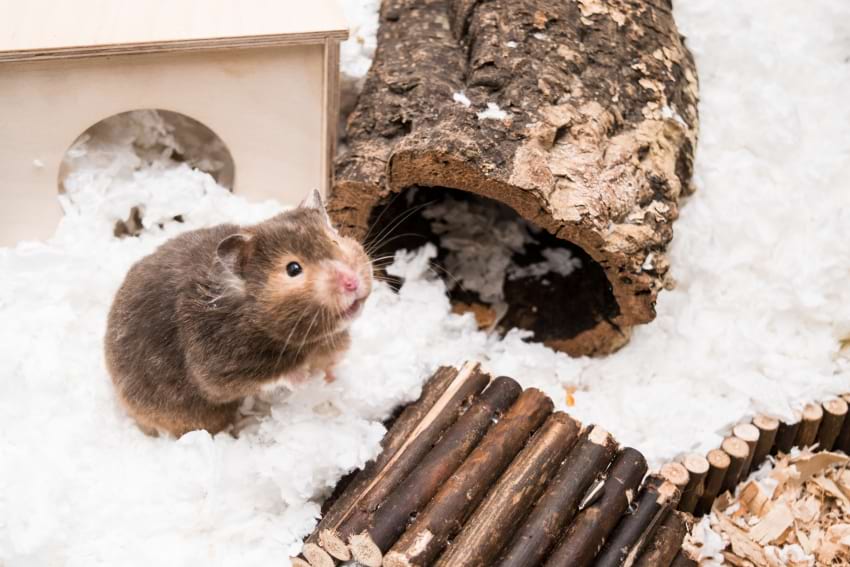
Now that we’ve added the essential cage supplies, it’s time to make the cage even more fun and enriching by adding different accessories ranging from bridges and cork logs to tunnels and chew toys.
It can be hard to keep your pet entertained as they always seem to have unlimited energy, but these accessories should help keep them occupied.
Here are some accessory ideas for the cage.
Cage furniture:
- Cork logs
- Hideouts
- Wooden bridges
- Wooden ladders
- Tunnels
- Platforms
Chewables:
- Chew toys
- Herbs and foraging plants
- Branches – if you use branches collected outside, make sure the wood is safe for hamsters. The branches should also be cleaned and dried to kill bugs or parasites before use. Avoid branches and twigs you find near heavily used roads or that might have been sprayed with chemicals.
- Cardboard tubes
- Willow balls
Nesting material:
- Soft hay, such as orchard or botanical hay – sprinkle hay all over their cage as hamsters use it to build their nest and nibble on it.
- Toilet paper sheets and paper napkins – hamsters love using them for their nest.
Other accessories:
- Rocks to file nails – if you want to use a rock that you found outside, give it a good scrub with hot water and soap before putting it in the cage.
Hamster Cage Setup Videos
Before you start setting up your hamster’s enclosure, I suggest looking at these awesome videos for some extra ideas and inspiration.
Bad Hamster Cage Setups: What Not to Do
Now that we covered everything a hamster cage needs to have to keep it’s resident happy and comfy, let’s go over some examples of bad hamster cage setups. The following gallery is showing some pretty terrible setups that are, unfortunately, still often seen among hamster owners.
Some of the most common mistakes are:
- a cage that is way too small
- not enough bedding (usually only an inch or two of bedding)
- a type of bedding that is not suitable or doesn’t allow burrowing
- a too small wheel
- not enough enrichment to give hamster something to do
Let’s look at some examples on what not to do when setting up a hamster cage.
How Often to Change Hamster Cage Setup
Hamsters get bored easily, so you can change things around from time to time when doing a complete cage cleanout. When doing a deep clean, remember to always keep at least ¼ of their old bedding to reuse in the cage. This keeps the hamster’s home smelling familiar to them and stops them from getting stressed.
If your cage is 775 square inches or a similar size, it should be good for a month before it needs to be completely cleaned. That’s if the cage is regularly spot cleaned to remove soiled bedding. You can take that opportunity to make a cage overhaul, switch things up, and add some new fun accessories.
Why a Good Cage Setup Is Essential for Your Pet’s Well-being
Cage setup is the one thing that will make the most significant difference in your pet’s quality of life. Remember that your hamster’s cage is their whole world. They spend almost the entire day in it, so it needs to be set up to satisfy their needs and allow them to express their natural behaviors. It should be able to mimic their natural habitat and provide them with similar enrichment that they would get in the wild.
Try to see things from your pet’s perspective when setting up their cage, have their natural habitats and behaviors in mind so you can provide a glimpse of that in their cage.
